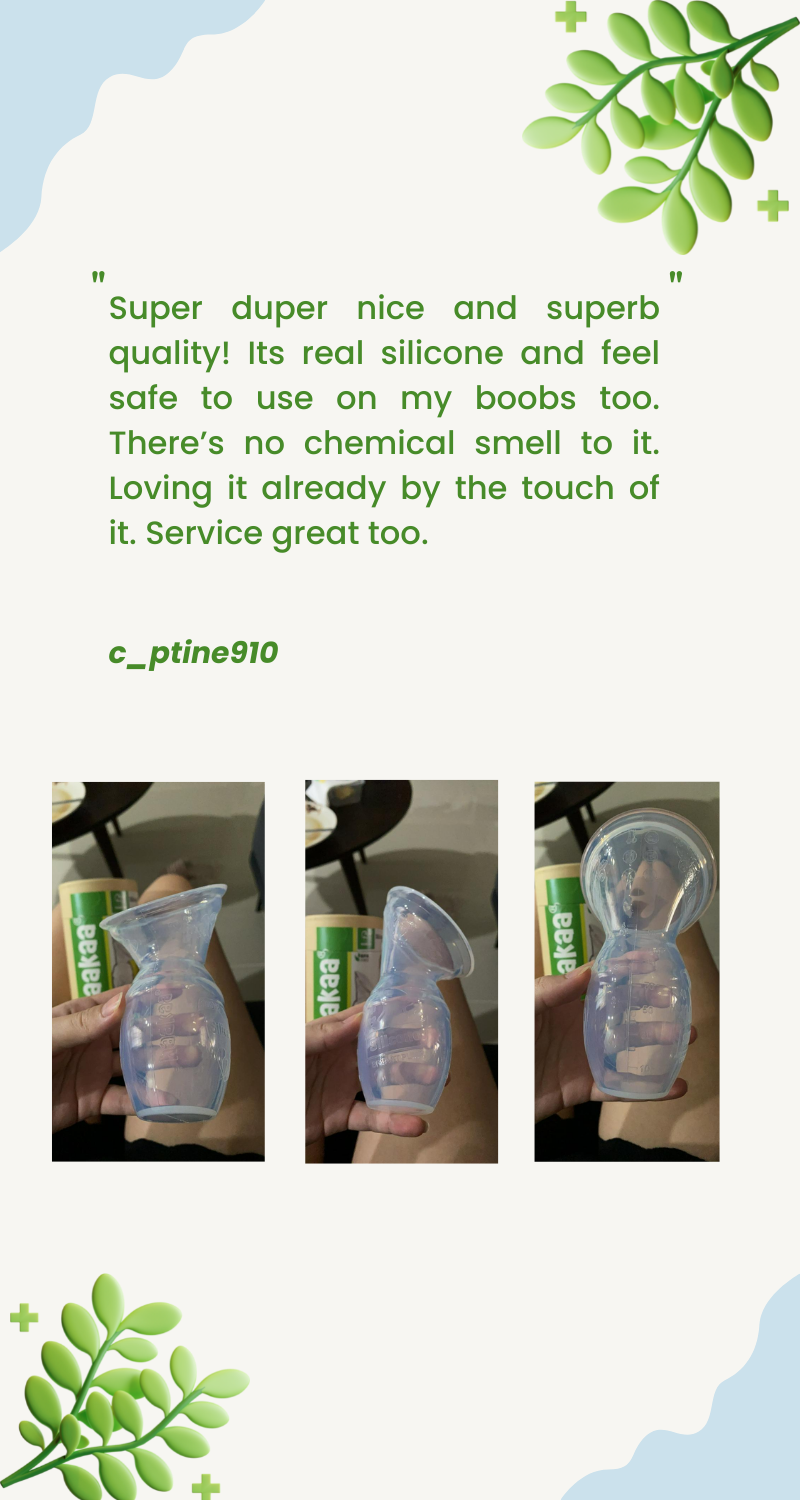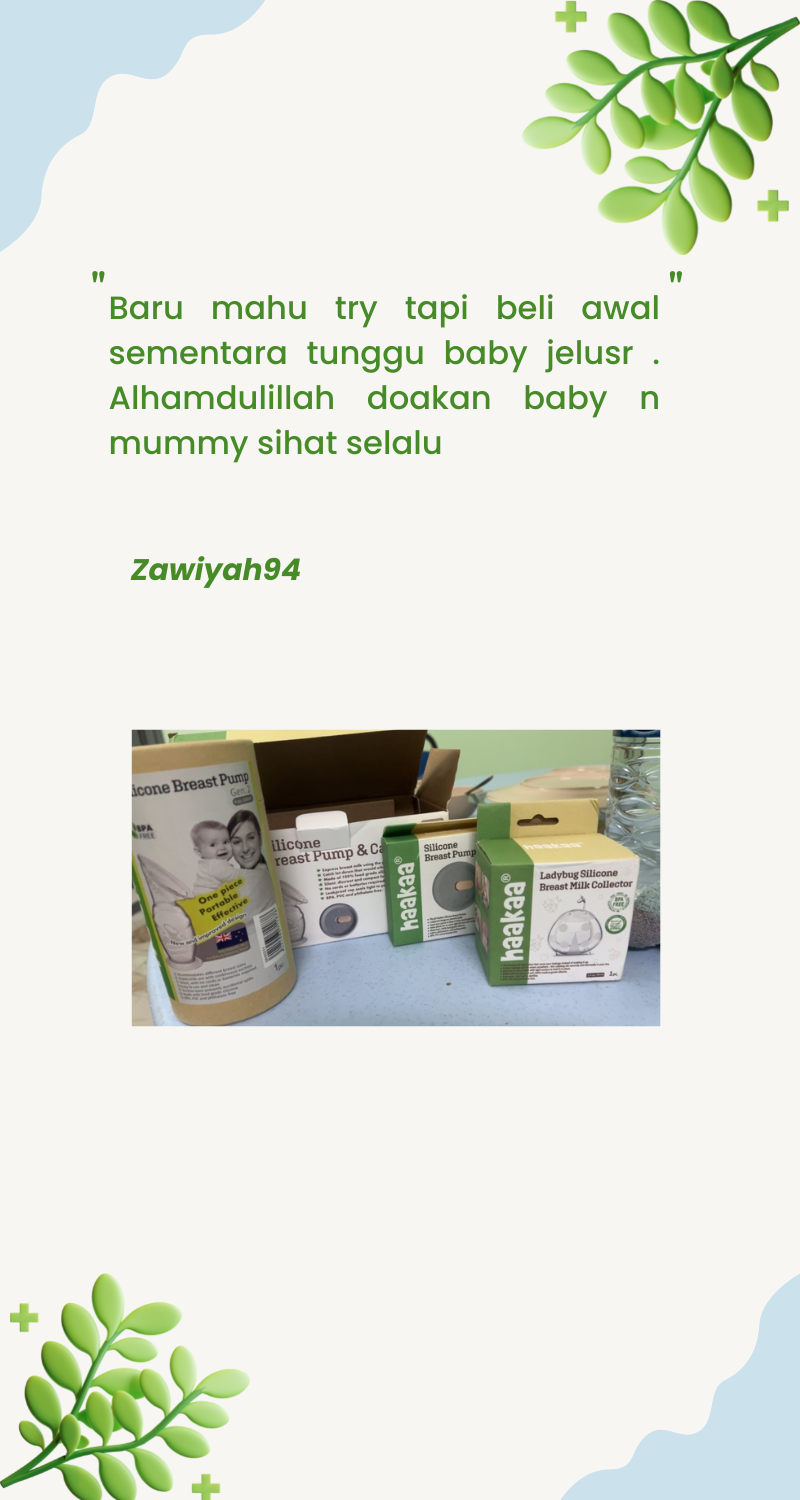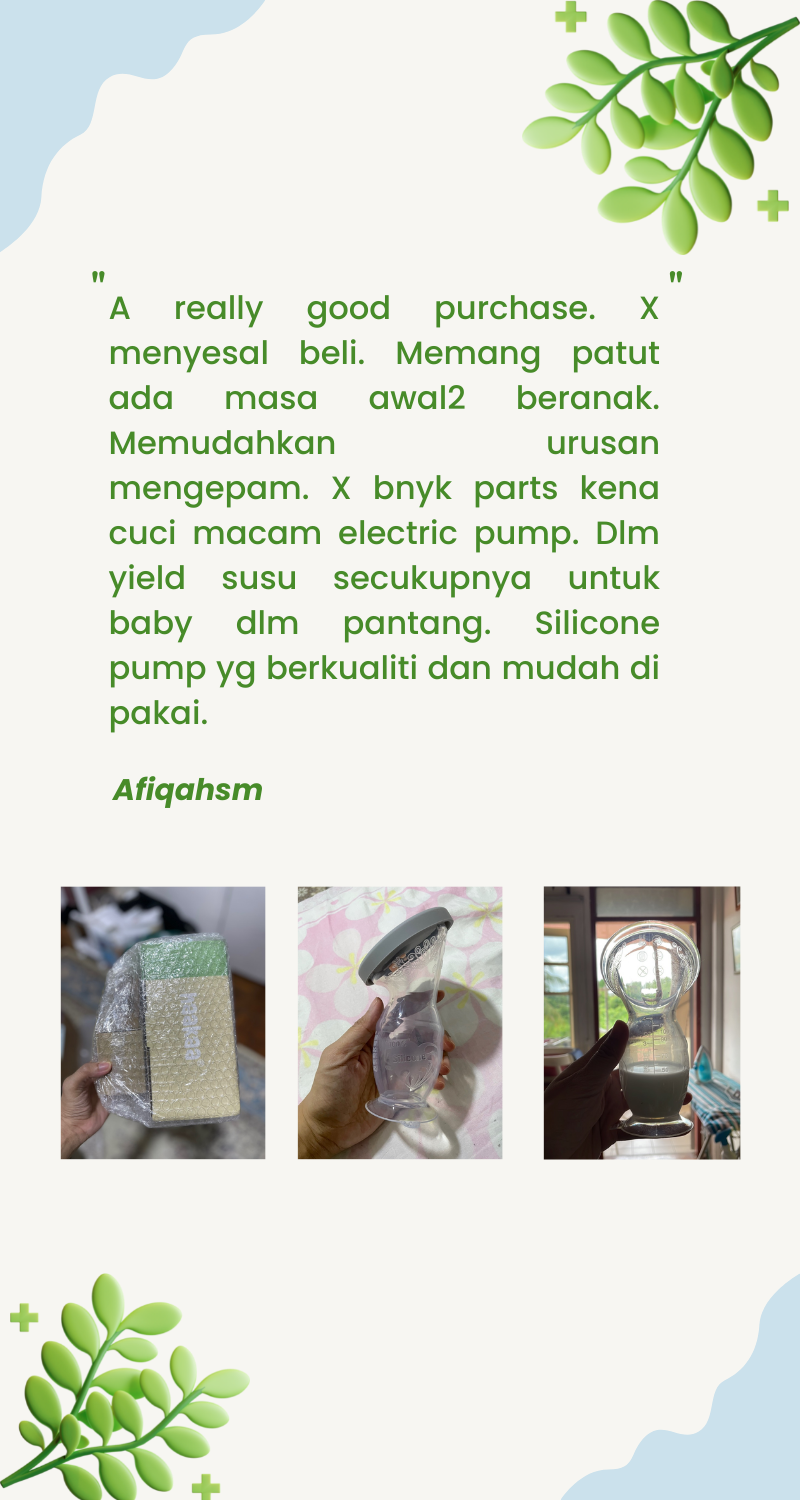- Register
- Wish List (0)
- Checkout
-
 0
0
Cart
BackYour shopping cart is empty!

Create an account with us to collect points and earn rewards while you shop.
Create an accountProduct FAQs
How Can We Help You?
If you require any help, please see our FAQs below. If you can't find the answer to your question, feel free to email us at [email protected] or call us on 03-2856 8597.
We strongly recommend cleaning and sterilising your Haakaa pump with any steam sterilising system or by boiling in water for 2-3 minutes. Do not use any bleach-based agents or sterilising tablets to clean your pump. Do not use UV sterilisers to clean this product as it may impact the lifespan of your pump.
It really comes down to preference. In the first three months after baby is born, it is recommended to sterilise your pump and all baby bottles that are used after every use. After this time, some mums continue to do so and others tend to wash their pumps with hot, soapy water after every use and sterilise after every couple of uses. It depends on what makes you most comfortable and works for you!
Please note that the following instructions refer only to products made entirely out of silicone and do not refer to products containing any other materials. The cleaning methods below may not be suitable for non-silicone products.
To clean your silicone items, just give them a good scrub in hot soapy water and then rinse. Pat the outside dry and leave to air dry on a drying rack. BUT, if you are in a rush to re-use them, just pop them in the microwave for 2-4 minutes minutes(stopping halfway to turn them over) and they'll come out completely dry!
Haakaa Silicone Brush is super handy when it comes to cleaning silicone items. Its soft silicone bristles easily remove leftover food and milk without scratching silicone surfaces.
Silicone is an absorbent material and can absorb the colours and smells of substances it comes in contact with. Although your silicone products can go in the dishwasher, we recommend hand washing with hot, soapy water. To sterilise, we recommend boiling in water for 2-3 minutes of using a steam steriliser.
We strongly recommend not using any bleach-based agents or sterilising tablets to clean your Haakaa products as it can affect the clarity of your product. Although your products might become cloudy after using detergent to wash them, silicone does not leach and it is still completely safe to use. If you are still concerned, you can sterilise your pump again by boiling in water, just to be safe!
Some mums have said that boiling the pump in water with a touch of white vinegar can help improve the clarity of the pump, so you may wish to give this a go.
Have you tried a stronger suction? Sometimes, when our bodies are constantly changing after the birth of our babies, the suction strength needed changes as well.
When attaching, do you fold the flange back, squeeze the bottom of the pump, centre it onto your nipple, unfold the flange and release? This is the most effective way of attaching. The more you squeeze the bottom of the pump, the stronger the suction will be.
Another tip would be to assist your breast by holding or cupping it in one hand while attaching the pump in the other so you can really get a centre onto your breast and allow the pump to grasp a bigger area.
If you find none of these tips work and it still won't suction on properly, it may be that the silicone material has worn and lost its suction. Sometimes this can happen depending how often it is used and sterilised, as well as the method of how it's washed and sterilised – the more you sterilise your pump, the faster it will lose its suction. Some mums find they need to replace their pumps after a few months while others have theirs for years. It really differs for each person based on each of those factors!
Sometimes silicone can act like a magnet and attract its surroundings or absorb smells, colours etc. We suggest hand washing the breast pump under hot, soapy water with a slightly rough sponge and gently scrubbing the exterior. This usually helps!
Haakaa pumps are 100% silicone, hands-free, silent, one-piece, travel-sized and overall just convenient! They may be used to help express breast milk or simply to catch let-down on the other breast during feedings, allowing you to build up a stash of breast milk for future use.
1. Sterilise your pump by boiling in water for 2-3 minutes.
2. Place the pump flange over your nipple – make sure your nipple is centred comfortably in the neck of the pump.
3. Apply suction – you may need to adjust the position of your pump a couple of times. Once the
pump is secure and comfortable, apply suction by squeezing the base of the pump to start the flow
of milk.
4. Once milk begins to flow, simply leave the pump alone to do its thing!
5. When the pump is full, empty into a glass storage bottle and reposition.
6. If the flow of milk slows or you've expressed your desired amount, detach from your breast and safely store your milk away.
To give you a little information, all of our pumps work off of suction and have the same size flange:
Generation 1
: 100ml one-piece silicone with no suction base
Generation 2
: 100ml or 150ml one-piece silicone with suction base
Generation 3
: 160ml or 250ml with thicker silicone walls and a slightly stronger suction. Can be interchanged from a pump to a baby bottle, feeding spoon, sippy spout or even a storage container.
Many mums love our Gen. 1 & 2 Breast Pumps for their compact, lightweight, single-piece construction. Alternatively, the Gen. 3 pump features a thicker silicone body that is perfect for mums looking for a stronger level of suction from their pump. We designed the Gen. 3 range to be future-proof and added to over time, growing with a baby from breastfeeding to their solids journey and beyond as they gain more independence and confidence to self-feed.
As for the accessories, the flower stopper is used to seal the milk in and prevent spills. The grey silicone lid acts as both a dust cap and a stopper. It creates a stronger seal around the flange and prevents spills, which is great for when you are on the go, and protects the flange from any nasties it comes into contact with. Another great feature of the silicone lid is that it has a little opening flap on top that releases air once you place it on the pump to allow an even tighter seal. The breast pump strap keeps the pump around your neck so that it doesn’t fall or get kicked off when you’re expressing.
We recommend expressing while feeding baby on the other side as it stimulates the other breast. If you are not nursing, try putting a warm flannel on top of your breast and massaging it to induce your milk flow. Every mother and her milk supply are different so don’t be disheartened if you are not getting as much as another mum!
You can definitely use the Haakaa as a primary pump. Some women use our pumps simply to catch excess milk that would otherwise be lost in a nursing pad. However, you can use it to express as you would with any manual pump. It is as simple as suctioning on the pump and allowing the suction to gradually and naturally draw the milk from your breast. All that would be required is a let-down. This is where we recommend feeding baby on the other side as it naturally triggers your let-down. Alternatively, if you are away from your baby, you can gently massage your breast with your hand or place a warm flannel on your breast to help your milk begin to flow.
It sounds like you may have too much suction strength on as it shouldn't be painful on your nipples at all. When attaching, simply squeeze the bottom of the pump, enter it onto your nipple and release. Keep in mind that the more you squeeze the bottom of the pump, the stronger the suction will be. As our bodies are constantly changing after giving birth, the level of suction may change and you may be required to trial and error what best suits your needs.
This may happen if the silicone seal/nipple is not sealed in properly. Make sure to push the nipple through the nipple ring, run your fingers along the rim of the nipple inside the cap and ensure it is flat all around. When screwing the top onto the bottle, ensure it is straight and tight.
If your bottle leaks while feeding, then it may be because the nipple flow is different to what your child needs. Haakaa bottles come with three different sized nipples to suit the different stages of your baby – Slow Flow, Medium Flow and Variable Flow. If the flow rate is too slow for your little one, they will have to suck harder to get more milk. This can push air up into the anti-colic vent, causing pressure to build and pushing liquid out of the neck of the bottle – causing leaks! To fix this situation, your baby may be ready for the next nipple flow level. As a general rule of thumb, the older the child, the faster the flow rate that is required.
There can be a range of reasons why your bottle might leak when you’re preparing milk for a feeding. One of these reasons might be that the temperature of the milk is too warm. This can increase the air pressure inside the bottle and cause leaks, as the air tries to find its way out.
Over-tightening the pieces of the bottle while assembling it can also cause your bottle to leak, surprisingly enough! To prevent this, ensure that the attachment ring is not tightened too much on the bottle. Twist on until you feel resistance – and when you do, do not twist any further as the ring is screwed on tight enough. If you over-tighten the ring onto the bottle too much, it may lead to damage – which is something you definitely want to avoid!
If you look at the top of the teat where the milk comes out, the differences are as follows:
Slow Flow = One small hole
Medium Flow = Three small holes
Fast Flow = Criss-cross (X shape)
The tube should fit through if you give it a little squeeze, push and wiggle. Once it is through, give it a gently pull on the other side to get it all the way through. The points of the X shape will then help "seal" the tube into the nipple.
No, unfortunately they do not. The Wide Neck Bottle line has been discontinued and we no longer have stock in our warehouse.
Our Silicone Nipple Shields are a standard design with a thin silicone protective layer, which still allows for close skin-to-skin contact for mum and baby but gives a little bit of protection for mum.
Our Breastfeeding Nipple Shields are slightly different. They are a patented design that are made of slightly thicker silicone for a more protective layer for cracked and/or bleeding nipples. They also include a bottle shaped teat or orthodontic teat at the end. This allows for a helpful transition from breast to bottle and bottle to breast. The variable flow nipple allows your baby to drink continuously without gasping for air or drinking bubbles, and prevents them from choking if milk flows too fast.
The shield works based on suction, similar to our pump. With a simple squeeze of the teat when attaching, it suctions onto the breast and is helpful with flat or inverted nipples.
A few suggestions would be trying to feed baby without initially suctioning it onto your breast. Instead, lay it onto your breast and allow baby to suck to suction it on naturally and see if that helps. Sometimes, if you suction it on already, baby’s sucking will pull your nipple in even more and cause pain or cause the nipple to compress and the flow to slow down.
Another tip I have come to find out that helps is expressing some milk into the teat before attaching your baby. I find that a lot of mums who attach their babies, especially when they are extremely hungry, suck harder to get the milk flowing quickly. If there is milk already available in the teat, they are more likely to drink more gently preventing the nipple from being pulled in.
It is recommended to simply place over your nipple before breastfeeding and push the top of the corrector down to create suction. The time will be determined by own body and the time it takes for the nipple to be breastfeeding ready.
You can use our lotion bars from 3 months onwards.
Small amounts of essential oils will not harm your baby but if you are concerned, you can do a patch test.
Our lotion bars are not tested on animals and are 100% cruelty-free.
Silicone is a 100% natural material, insensitive to temperature changes, hypoallergenic and easy to clean. It is also airtight and leakproof. It has a low reactivity to other chemicals and does not leach because it contains no chemical fillers, unlike plastics (which are derived from crude oil), making it incredibly safe to use.
Silicone is porous, so instead of leaching, it will absorb the substances it comes in contact with. These pores also make silicone breathable, hence making it comfortable for mums to wear.
Silicone can last for decades for household use, and withstands harsh conditions like extreme cold and heat without degrading. It’s easy to care for, simply wash with warm soapy water or boil to sterilise.
Silicone is made with natural, plentiful materials and is derived from elements found in sand and stone. It does not break down into microparticles like plastic.
When it is burned, silicone does not release any toxic fumes (unlike plastic) and breaks down into inorganic but harmless ingredients: amorphous silica, carbon dioxide and water vapour.
Nanosilver refers to silver particles used in products to kill microbes. It has a natural antibacterial effect and prevents secondary virus inflammation by controlling germs. It is non-poisonous and non-allergenic. It prevents odour and discoloration/darkening. It is a natural method of maintaining cleanliness of up to 99.9%.
Phthalates are a group of chemicals used to make plastics more flexible and harder to break. It increases their flexibility, transparency, durability, and longevity. They are found in hundreds of your everyday products, but have been linked to causing health problems. Haakaa prides itself in steering far away from phthalates! We strive to create only the safest products for you and baby.
BPA stands for bisphenol which is an industrial chemical used to make certain plastics and resins. These are used to coat the inside of metal products, such as food cans, bottle tops and water supply lines and may seep into food or beverages that you are consuming. It can cause harmful effects on our bodies.
PVC stands for polyvinyl chloride which is a synthetic plastic polymer. Haakaa strives to use as minimal plastic as possible and use as natural materials where we can. You will find that our products are PVC-free.
PP stands for polypropylene which is a thermoplastic. I know what you’re thinking, plastic?! Thermoplastic is a special kind of plastic that can be heated to its melting point, cooled and reheated again. In other words, it is reusable and recycled plastic! Another win for the environment!
Borosilicate glass is durable and resistant to thermal shock. It is hypoallergenic, lead-free and BPA-free. It is 100% safe to freeze or heat whereas other glass may break with extreme temperatures.
Real Mama Review



Subscribe to the Haakaa Newsletter
Copyright to Haakaa Malaysia © 2025
- American express
- Master
- Paypal
- Visa


